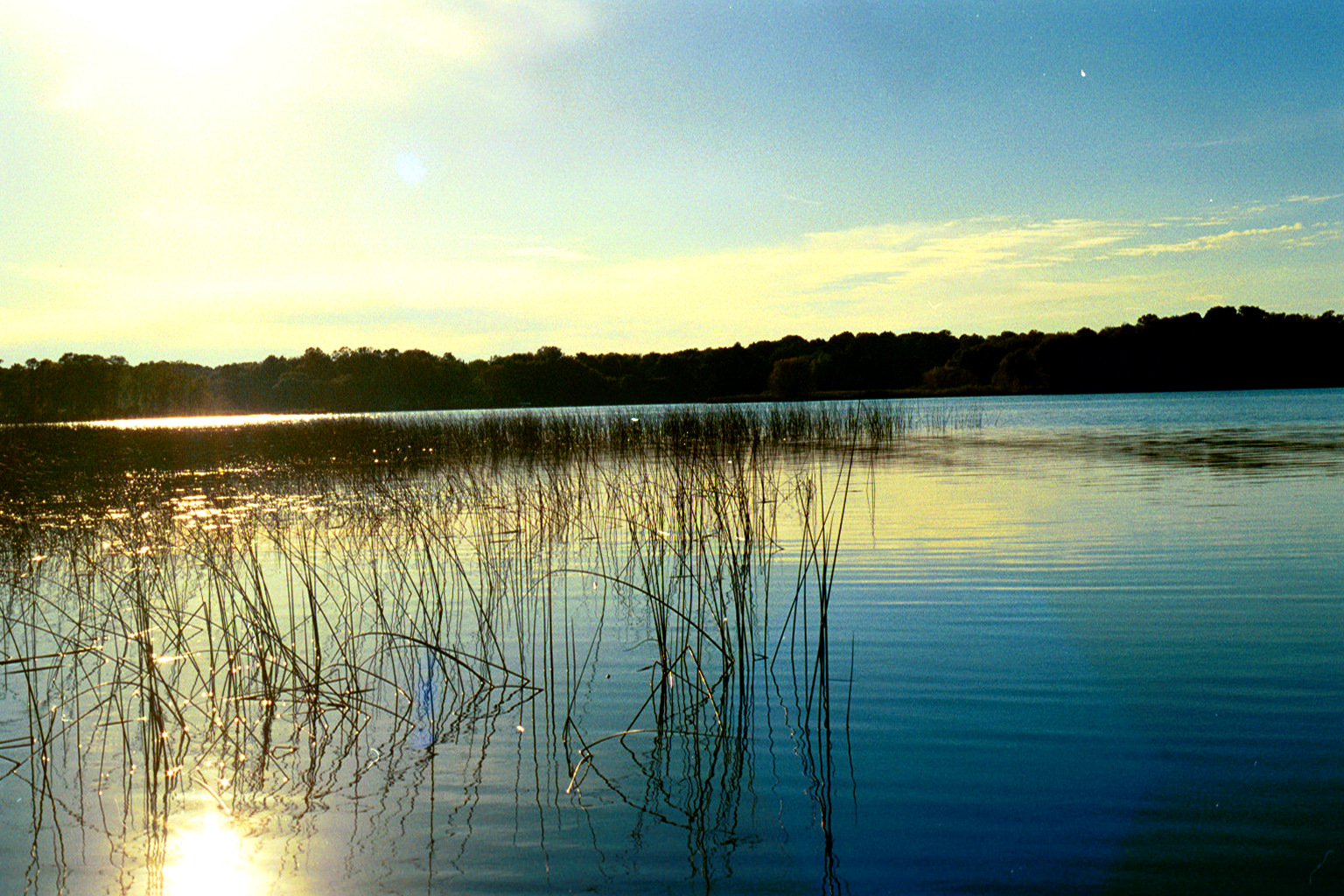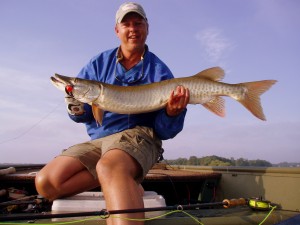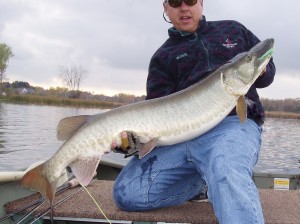You want to catch a muskie on a fly? No one said it was going to be easy. Or did they? Be sure that I didn’t. You want to catch a lot of fish?– I suggest a trip to one of our fine local spring creeks, this time of year the hatches will keep the trout feeding and your four weight bent all day. Or consider a foray for panfish in one of the thousand lakes within a couple of hours of the Twin Cities—if you tried you could get into triple digit numbers in a half day of fishing. And you could even bring home a dozen or so for a fine meal. Even bass fishing with the fly will usually provide steady action—my customers on average catch about two fish per hour on the Mississippi, similar numbers are possible for largemouths on local lakes.
I’m not 100% sure what has caused to uptick in the interest in chasing muskies with the fly rod [those guys in Northern Wisconsin run a great program and probably have A LOT to do with it]. But despite what social media postings may lead you to believe [hardly a day will pass this summer without a fly-caught muskie showing up on Facebook], catching a muskie on a fly is still one of the biggest challenges to fly rodders. No matter where you decide to flail, a typical day of fly casting for muskies involves many hours of flogging the waters with the heaviest fly rod you own, casting a fly the size of a squirrel. At some point during the day a muskie will eat your fly, at which point you will probably be so surprised that you will either not react at all, or worse yet, raise your rod tip in a trout-style hook set. Both of these are likely to result in bad words and no pictures. Spending time on high percentage waters, like the fine rivers of northern Wisconsin will up the odds that you will get multiple shots per outing.
But did you know that there are high percentage waters right here in the Twin Cities? It’s true, there are over a dozen lakes right here in the Metro that have strong, fishable populations of muskies. Lakes like Independence, Eagle, White Bear, Forest—these all have muskies— with good numbers AND size. Every one of these lakes has produced many fish over 50 inches, and these fisheries compare favorably with any other muskie water anywhere.
Here is a typical metro area muskie, this one ate a popper
There is lots more to muskie fishing than just catching fish, and if you are thinking of planning a muskie trip to the North Woods you should do so. To smell the pines and the fresh air, to hear the loons but not the cars, to take in a North Country Sunset, these are all things you should do at least once a year.
But if you want to get a primer or a refresher course on muskie fishing, perhaps you want to see if you are up the many hours of flogging with the big rod, maybe you want to get tuned up for your big trip, here is what I am offering: From now through ice up, muskies are available to flyrodders on several of my favorite lakes, and you and a friend can get in on the action for only $250! This is a weeknight venture, I will meet you and your partner [you can fish alone, too] at a local lake at 5:00 and we will fish until dark. All tackle will be provided, you just need to show up with a can-do attitude, and let me put you on the fish. I have my favorite lakes, where we will fish will depend on conditions and where you are coming from. It is likely that the boat launch will be 30 minutes or less from where you live or work.
I didn’t say it would be easy, but it is totally doable, and it is likely that we’ll have some good chances at muskies, and probably catch a few bass and pike along the way. You’ll learn the water, learn the techniques, and be in great shape for your next adventure.
While I am promoting this primarily to fly rodders, anglers with all types of gear are welcome. If you want to fly fish but want to split the trip with someone using gear, that’s just fine. [Don’t worry, the guy with the fly rod will always get the front of the boat!]
Here is me with a bigger than average one from a favorite lake. I didn’t measure it, let’s call it 49 3/4″. You can see the tail of the fly in its mouth.
This is the fly I caught it on, I tied it in 5 minutes before I left to go fishing
These are more typical of what I use, not too big, but they move plenty of water. Easy to cast on a 10 weight and the fish like to eat them !
MUSKIE FISHING WITH A FLY “TOP TEN LIST”
1.Fish water with a good population of fish
2.Fish when the conditions are right–wind is bad-bad for casting, boat control, and line management. Low light periods are key, especially during summer. My perfect muskie fishing day would be light wind, overcast, maybe a little light rain.
3.Have the right equipment, a 10 weight rod [or heavier] with a line to match.
4.Use a short, heavy leader with wire bite tippet.
5.Strip the fly to within a few feet of your rod tip EVERY cast, watching for following fish.
6.Be an efficient caster [can you make a 50′ cast with one back cast?]
7.Use a big fly with a big sharp hook [at least a 4/0 or 5/0]. But don’t over do it–if your fly is too big, casting stops being fun
8.When a fish eats your fly, set the hook with a “strip set”.
9.Have good boat control.
10.Have realistic expectations–casting all day for one or two “eats” is standard.





